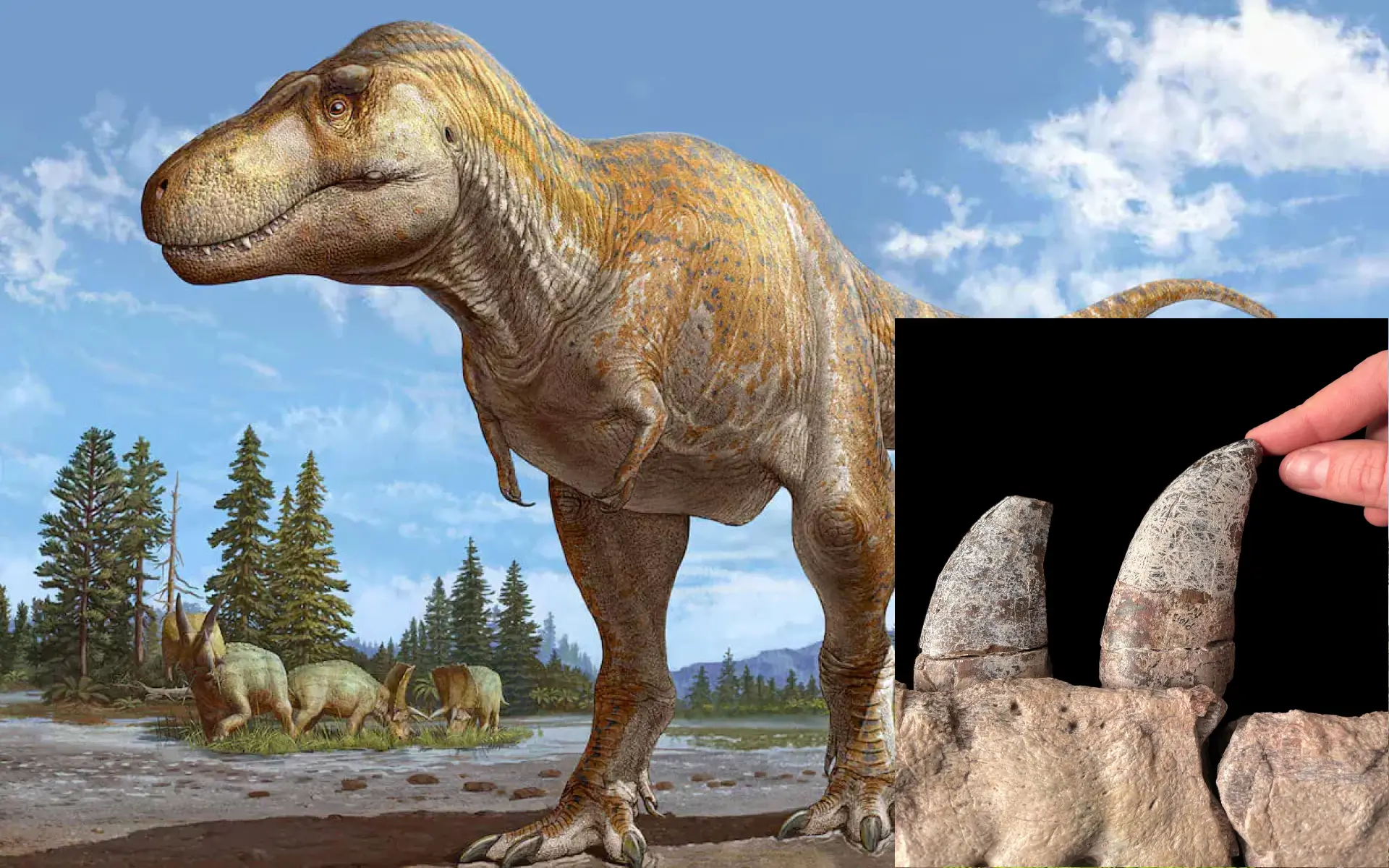
The Tyrannosaurus rex, or T. rex for short, is an iconic dinosaur that has captivated the imagination of people around the world. With its massive size, powerful jaws, and fearsome reputation, it is often regarded as the “King of the Dinosaurs.” However, the origins and evolutionary history of this formidable predator have long been a mystery to paleontologists.
In the arid landscapes of New Mexico, paleontologists made a groundbreaking discovery that has revolutionized our understanding of T. rex’s origins in North America. A team of researchers from the University of Bath, the New Mexico Museum of Natural History and Science, and other esteemed institutions identified a newly discovered subspecies of tyrannosaur known as Tyrannosaurus mcraeensis. This predator, older and more primitive than its famous cousin, shares a striking resemblance in size, measuring roughly the same as a double-decker bus.
The catalyst for this discovery was a partial skull unearthed years ago in western New Mexico and displayed at the New Mexico Museum of Natural History and Science. This specimen provided crucial evidence that the Tyrannosaurus species inhabited North America much earlier than previously believed, rewriting the timeline of their existence on the continent. By examining the unique characteristics of the T. mcraeensis skull, scientists gained invaluable insights into the evolutionary journey of T. rex.
READ ALSO: The Devastating Tornado in Panama City Beach
The appearance of Tyrannosaurus rex in North America, approximately 66 million years ago, has long puzzled scientists due to the absence of close relatives on the continent. The discovery of Tyrannosaurus mcraeensis fills a crucial gap in the scientific record, shedding light on how T. rex might have first arrived in North America. Based on the location of other fossil finds that have been dated between 66 and 75 million years ago, researchers suggest that T. mcraeensis may have lived between 71 and 73 million years ago, predating T. rex by five to seven million years.
The study conducted by the team of scientists involved a meticulous analysis of the partial skull and other skeletal remains of T. mcraeensis. They compared each bone with those of numerous T. rex specimens, identifying subtle yet significant differences that affirmed the uniqueness of the New Mexico tyrannosaur. These differences, although subtle, are typical in closely related species, as evolution slowly causes mutations to accumulate over millions of years.
The newly discovered Tyrannosaurus mcraeensis, despite its older age and more primitive features, was roughly the same size as its famous descendant, T. rex. Measuring up to 40 feet in length and 12 feet in height, both predators were formidable meat-eaters. However, the analysis of the jaw bones and other skeletal features suggests that T. mcraeensis is not a direct ancestor of T. rex. Instead, it is considered a side-branch in the species’ evolution, offering clues about the existence of more undiscovered tyrannosaur species.
Dr. Nick Longrich, a co-author from the Milner Centre for Evolution at the University of Bath, explains that the differences between T. rex and T. mcraeensis are subtle but significant. This is a common occurrence in closely related species, as evolution gradually shapes their physical characteristics over time. The study of T. mcraeensis highlights the complexity of the Tyrannosaurus lineage and raises the possibility of further exciting discoveries in the field of paleontology.
The discovery of Tyrannosaurus mcraeensis in New Mexico once again underscores the extent and scientific importance of the state’s dinosaur fossils. Dr. Spencer Lucas, paleontology curator at the New Mexico Museum of Natural History and Science, emphasizes the significance of these findings and the potential for future discoveries. He states that many new dinosaurs remain to be discovered in the state, both in the rocks and in museum drawers.
The fossils found in New Mexico provide valuable insights into the evolutionary patterns of tyrannosaurs. The presence of apex predators like T. rex in what is now the southern United States at least 72 million years ago challenges previous assumptions about their distribution. The study suggests that tyrannosaurs likely originated in southern North America before expanding westward. It also reveals that larger, more advanced species evolved in the southern United States, in contrast to the smaller and more primitive tyrannosaurs found in Montana and Canada.
READ ALSO: Secret Tunnel Found in The Heart of New York City
To fully understand the evolutionary journey of Tyrannosaurus rex and its relatives, it is essential to delve into the fascinating world of these prehistoric giants. T. rex, often abbreviated as T. rex, roamed the earth approximately 68 to 66 million years ago during the late Cretaceous Period. It was characterized by its massive size, with adults reaching up to 40 feet in length and standing around 12 feet tall at the hips.
As a carnivorous dinosaur, T. rex had a diet consisting primarily of other large dinosaurs. Its jaws were filled with large, serrated teeth that could grow up to 12 inches long, perfectly adapted for tearing into flesh and bone. The monstrous predator possessed one of the strongest bites ever recorded in the animal kingdom, making it a formidable force on the prehistoric landscape.
Recent studies have shed light on the sensory abilities and social behaviors of T. rex. Its keen sense of smell, believed to be among the best in the dinosaur kingdom, allowed it to track prey over great distances. There is growing evidence to suggest that T. rex may have displayed complex social behaviors, such as hunting in packs and caring for its young.
